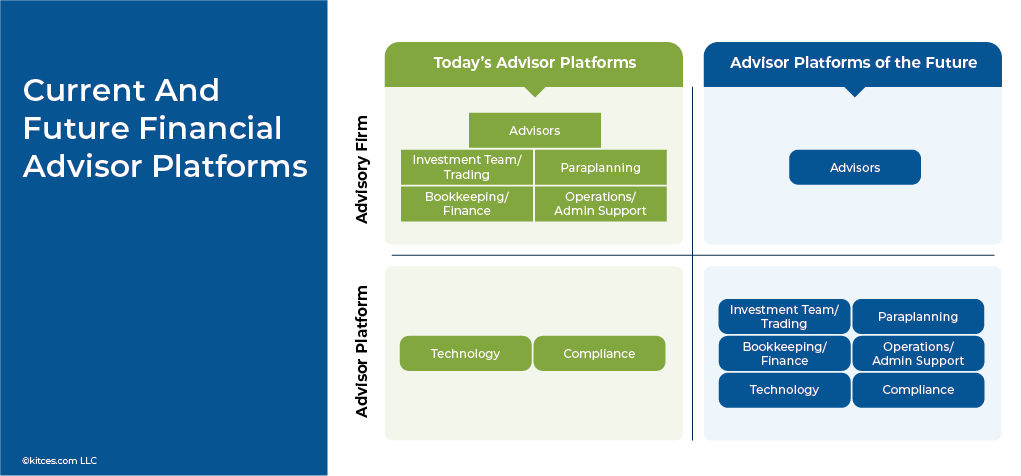For the past several decades, platforms for advisors have differentiated with the quality of their technology. The focus on ‘tech’ was a natural evolution for advisor platforms away from their roots – which was originally to differentiate by the quality of their proprietary product shelf, the primary means that brokerage firms and insurance companies attracted advisors to them in the 1960s, 70s, and 80s. As product shelves became increasingly open architecture in the 1990s and 2000s, what mattered wasn’t the particular products made available to advisors (because the answer increasingly was “anything you’d want is already there”), but the technology that the advisor platform made available to implement those products and help the advisor better run their business.
However, the reality is that it’s very expensive to build and maintain technology, especially when considering the full range of CRM, portfolio management, financial planning, and more than a dozen other sub-categories of technology that financial advisors use in their firms. Consequently, the technology that most of today’s advisor platforms (e.g., broker-dealers, RIA aggregators, TAMPs, etc.) are touting is not actually their own proprietary technology… it’s a selection of third-party technology tools they’ve woven together to become the ‘tech stack’ they offer to their advisors. Which is usually one from a list of just 3 leading providers in any particular category. Such that, in the end, advisor platforms are increasingly all offering the exact same technology tools… and signaling an end to differentiating advisor platforms with technology altogether!
So what’s the alternative for advisor platforms to differentiate in the future? In a word: Services. Because advisory firms still – and will always – continue to need team members to provide service and handle the tasks that go beyond what technology alone can automate.
In practice, support services from advisor platforms might include a wide range of consulting services – from compliance to an advanced planning team, operations to technology – that advisors could engage for a fee as needed. Though arguably the even bigger opportunity is for advisor platforms that provide ongoing staff support services in the key areas where advisory firms need ongoing support – from (virtual) assistants for administrative tasks to ongoing compliance support, bookkeeping, and financial reporting to paraplanning, trading and investment research, and more. Staffing needs that already consume 15% or more of the typical advisory firm’s revenue today… as compared to the barely 4% of revenue that the typical advisory firm spends on technology. Which means that providing services is actually far more of an economic opportunity to serve advisors than it is to ‘just’ solve their technology needs!
In the long run, the growth of advisor platforms as service providers – not ‘tech’ platforms – will also create more opportunities for differentiation, as some will inevitably be better at delivering services than others and/or will be better at the needed services for particular types of advisors with whom they can specialize. Which also gives the most successful service-providing advisor platforms more pricing power in what has become an increasingly commoditized payout-centric competitive environment. As well as the opportunity to drive greater margins for themselves by reinvesting into technology – not for their advisors, per se, but for themselves – to better deliver their services to advisors as ‘tech-enabled service providers’.
The key point, though, is simply to recognize that advisor platforms are not large enough to build all of their own technology from scratch, and cannot sustainably differentiate themselves by offering the same suite of technology solutions that more and more other advisor platforms are offering as well. The opportunity comes in the gaps between technology – the service work that humans must still accomplish – that drive most of the costs of advisory firms as service businesses in the first place. Which means the most successful advisor platforms in the future will be those that best deliver services that allow advisors to run the human parts of their businesses more efficiently!


